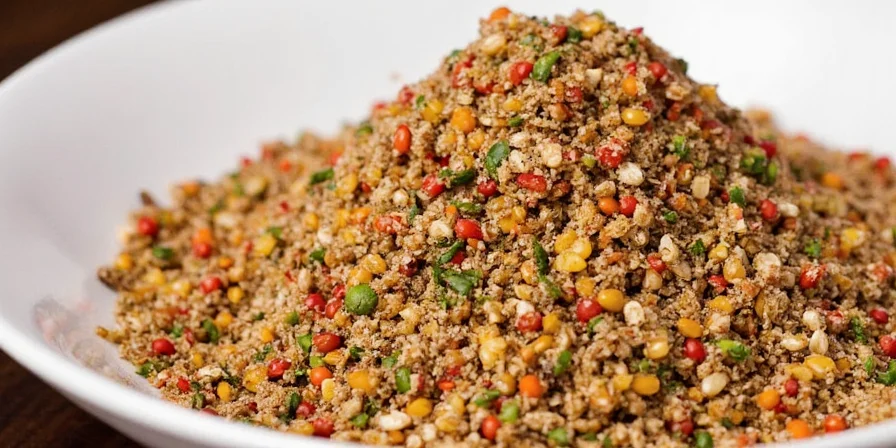Gyro Seasonings Decoded: 10 Tips to Master the Magic of Greek Flavors
Table of Contents
- Introduction
- Tip #1: Know Your Core Ingredients
- Tip #2: Oregano is King, But Don’t Ignore Others
- Tip #3: Balance Garlic and Onion Like a Pro
- Tip #4: Use High-Quality Salt (Yes, It Matters)
- Tip #5: Add a Pinch of Heat for Depth
- Tip #6: Toast Spices for More Flavor Punch
- Tip #7: Customize Based on Protein
- Tip #8: Store Your Blend Properly
- Tip #9: Pair with Fresh Herbs Before Serving
- Tip #10: Taste and Adjust Like a Real Chef
- Deep Dive: The Science Behind Gyro Seasoning
- Conclusion
Introduction: What Makes Gyro Seasoning So Special?
If you've ever bitten into a juicy gyro wrap and thought, “Man, this tastes like sunshine in Greece,” you're not alone. That iconic flavor comes from one unsung hero — gyro seasoning. Whether you're grilling at home or running a food truck, mastering your own custom blend can take your dishes from “meh” to “mon dieu!”
In this article, we’ll explore everything you need to know about gyro seasonings, including pro tips, flavor science, and why oregano deserves its own holiday.
Tip #1: Know Your Core Ingredients
Gyro seasoning typically includes:
- Oregano
- Garlic powder
- Onion powder
- Paprika
- Salt
- Black pepper
- Cumin (optional but popular)
These ingredients work together like a rock band — each plays a different role, but they sound best when harmonized!

Tip #2: Oregano is King, But Don’t Ignore Others
Oregano is the star of the show in most gyro blends. However, it’s important to balance it with supporting players like garlic and paprika. Think of it like a movie cast — Brad Pitt might get top billing, but without the rest of the ensemble, the film wouldn’t be as good.
| Spice | Role in Gyro Seasoning |
|---|---|
| Oregano | Main aromatic backbone |
| Garlic Powder | Umami boost |
| Onion Powder | Sweet depth |
| Paprika | Color and subtle smokiness |

Tip #3: Balance Garlic and Onion Like a Pro
A classic ratio is 2:1 garlic to onion powder. Too much garlic can overpower, while too little makes your blend bland. Use a microplane if using fresh cloves — it releases more oils than pre-ground powders.

Tip #4: Use High-Quality Salt (Yes, It Matters)
Kosher salt or sea salt are preferred over table salt because they dissolve better and add a cleaner taste. Plus, who wants to taste anti-caking agents?
Tip #5: Add a Pinch of Heat for Depth
A small amount of cayenne pepper or red pepper flakes adds complexity without making things spicy. It's like a secret whisper in the back that says, “I’m here, but I won’t ruin your lunch meeting.”
Tip #6: Toast Spices for More Flavor Punch
Dry-toasting whole spices like cumin seeds in a pan before grinding them unlocks their essential oils and gives your blend a roasted richness that store-bought mixes just can't match.

Tip #7: Customize Based on Protein
Chicken? Lamb? Pork? Tofu? Each protein benefits from a slightly different approach:
- Lamb loves bold flavors — double up on garlic and cumin
- Chicken needs subtlety — less heat, more paprika
- Tofu? Try smoked paprika and fennel for an earthy twist
Tip #8: Store Your Blend Properly
Keep your homemade gyro seasoning in an airtight container away from light and moisture. It’ll stay fresh for up to 6 months — after that, it loses potency like an old joke.

Tip #9: Pair with Fresh Herbs Before Serving
Add a final sprinkle of fresh dill or mint before serving to elevate the aroma and bring that garden-fresh kick. It’s the finishing touch that separates home cooks from kitchen heroes.
Tip #10: Taste and Adjust Like a Real Chef
Seasoning isn’t magic — it’s trial and error. Start with a basic blend, then tweak until it sings. You might discover a new version that becomes your signature!

Deep Dive: The Science Behind Gyro Seasoning
The unique flavor of gyro seasoning comes from how the individual spices interact with the Maillard reaction during cooking. This chemical reaction between amino acids and reducing sugars creates hundreds of flavor compounds, giving grilled meats their complex taste.
Here’s a breakdown of what happens:
- Oregano contributes thymol and carvacrol — aromatic phenols that enhance savory notes
- Garlic and onion release sulfides that bond with meat proteins, enhancing umami
- Paprika adds color through carotenoids and mild capsaicin-like warmth
In short: Your brain thinks it’s on vacation in Santorini because your taste buds told it so.
Conclusion: Master the Art of Gyro Seasoning, One Pinch at a Time
Gyro seasoning is more than just a mix of dried herbs — it’s a gateway to flavor paradise. By understanding the basics, balancing your ingredients, and experimenting with confidence, you can create your own signature blend that turns even the humblest chicken breast into a culinary celebration.
So grab your spice jars, channel your inner Greek chef, and remember: the only thing that should be dry in your life is your wine — not your gyro!











 浙公网安备
33010002000092号
浙公网安备
33010002000092号 浙B2-20120091-4
浙B2-20120091-4